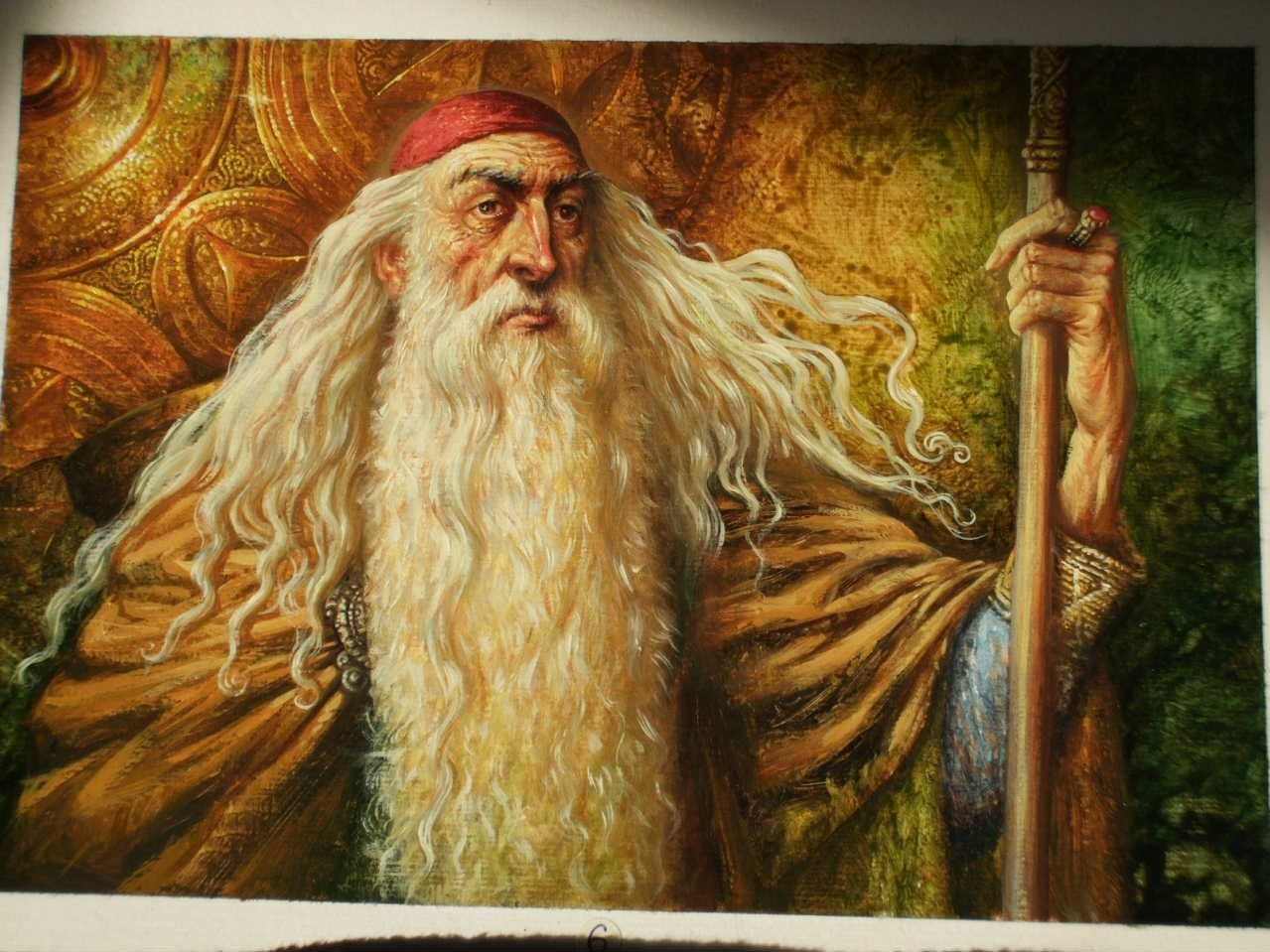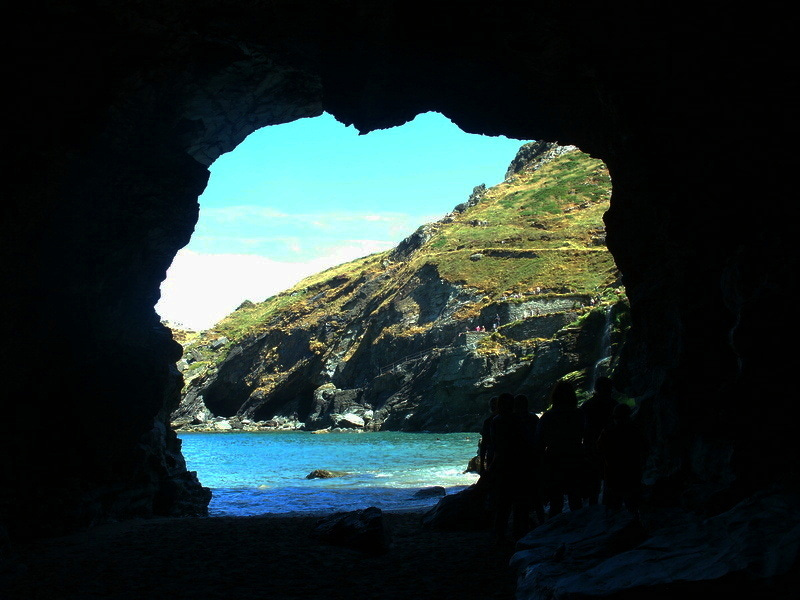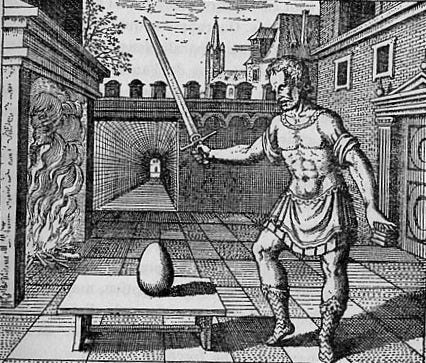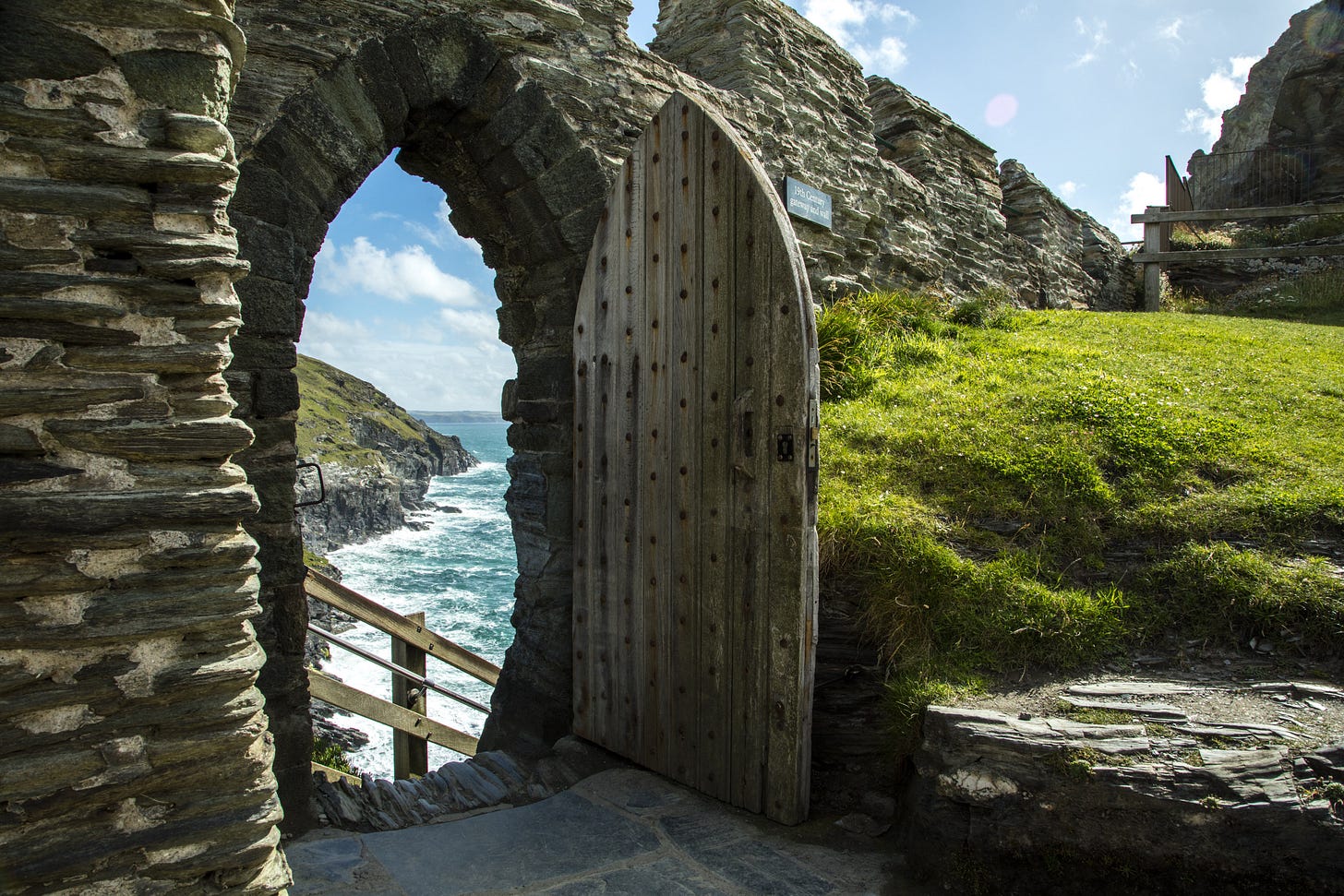Merlin's Cave
Shakespeare's Secret, Prospero's Island and the Rosicrucian Egg
Recently I was at Tintagel in Cornwall with a cousin who I had not seen a very long time. We talked about my mother a lot, and as we walked along the Tintagel coast I thought of how my mother’s ashes were scattered out at sea, as she had wished. No grave to visit but a watery one. Out there with Manannan Mac Lir. I don’t mind. My mother was a Piscean soul, and it was her wish. Her name was Jennifer, which comes from Guinevere, I believe. Which brings us to the story of Arthur at Tintagel in Cornwall, to the rocky beach at Trebarwith Strand where King Arthur and his knights once roamed.

It was my old friend Geoffrey of Monmouth who, in the 12th Century, identified Tintagel as the very place that King Arthur was conceived. In his ‘The Life of Merlin’ (Vita Merlini), The Prophecies of Merlin and The History of the Kings of Britain, the latter of which gives the background to Merlin’s life. The narrowness of the approach to Tintagel could be defended by three men, he said. Monmouth referes to the headland nearly separated from the mainland by coastal erosion, accessible by a narrow bridge and a steep flight of steps.
Historic Tintagel is now a large expanse of rock, exposed to the Atlantic winds and barely covered with soil and grass. Littered the ruins of a medieval castle and the low walls of a large number of Dark Age huts, it is all very evocative of Arthurian romance and mystery.
Merlin’s cave lies below the ruined castle, and is perhaps where Merlin meditated, time-travelled, taught Arthur the ways of his wisdom and prophetic powers. The cave may have been a portal of some sort.
In 1233-36, Richard, Earl of Cornwall (1209-72), the younger brother of Henry III, acquired Tintagel and built a castle here. It seems that he spent very little time there, if any. Why then did he spend time here on the headland in Cornwall? Did he want the prestige of occupying the spot where Arthur was conceieved? It was not a sensible place to build. The hall had to be buttressed as perhaps the land around it was subsiding. The inner court was closed off from the headland by a curtain wall and a detached kitchen was built at the end of the hall. The castle fell to ruin one hundred years later. A survey of the properties of the Duchy of Cornwall taken in 1337 describes Tintagel as:
‘a walled castle in which there are two decayed chambers over the two gateways, one sufficient chamber with a kitchen for the constable, a decayed stable for eight horses, a cellar and a ruined bakehouse. And it should be noted that the timberwork of the great hall of the said castle was dismantled by order of the lord John (of Eltham) formerly Earl of Cornwall because the hall was ruinous and its walls of no value. And the said timber remains shut up in a certain building there. There is a sufficient chapel therein in which there is a priest celebrating divine service daily’.
But, it is said that the cave is where the prophetic, shapeshifting Merlin, taught the young Arthur. In T.H. White’s ‘The Once and Future King’, Merlin seeks to educate Arthur about the concepts of "Might and Right" and the horrors of war by changing him into a variety of different animals. When humans can coexist with creatures of the natural world, Merlin explains to Arthur, they will finally solve the problems of their own species:
"the imaginary lines on the earth's surface ... [that] the airborne birds [skip] them by nature ... [would disappear] for Man if he could learn to fly" - The Once and Future King , p.639)
Merlin’s sight is extraordinary and seering not just of the physical world, but of the hidden worlds between dreams and reality, between the future and the past. He has what Geoffrey Ashe called ‘a multiplicity of vision’, forming a link between the worlds during the so-called Dark Ages. In White's The Once and Future King, Merlin is does not fully exist in the present, is the messenger of fate who traverses many timelines. He tips Wart (Arthur) into that line between the human and the natural world where they themselves shapeshifting as geese, falcons and many other creatures.
You can read a lot more about Merlin here:
Merlin the Madman
“The best thing for being sad," replied Merlin, beginning to puff and blow, "is to learn something. That's the only thing that never fails. You may grow old and trembling in your anatomies, you may lie awake at night listening to the disorder of your veins, you may miss your only love, you may see the world about you devastated by evil lunatics, or know…
But what I’d like to talk about is not so much Merlin’s cave, but his grave, which has about it a great mystery. Where is it for a start? Avalon? Where indeed is that? The Freemasons believe the secret group of ‘Nine’ in the Rosicrucians knew the whereabouts of Merlin’s tomb and they believed that it contains the fifth element- the Monad. The ultimate secret. It is possible that the Excalibur sword held a navigational clue. A Rosicrucian called Michael Maier, a German count, knew. There were cryptic clues in his writings. The first clue was-
“Pegasus opened a spring of overflowing water wherein Diana washed herself, to whom Venus was handmaid and Saturn gentleman usher.” Michael Meier
Meier was Michael Maierus 1568–1622, a German physician and counsellor to Rudolf II Habsburg. He was an alchemist and composer. His clue about Pegasus is not a very good clue as many who have pondered this, like Graham Philips in Merlin in the New World, still have not a clue. I have been reading this book, full of riddles and hints at things like the whereabouts of Merlin’s grave, a mystery which evokes a cloak and dagger response from some shady unknowns. For example, Graham Philip’s own Excalibur sword replica (quite precious) and some vital notes sent to him by another researcher and mentor called Gwynn, (who was nothing short of obsessed with Merlin’s grave and where it might be), were robbed from his apartment. They were the only things robbed. Gwynn says that there were and are those who would kill for finding the location and contents of Merlin’s tomb.
The whole Rosicrucian mystery pivots around Merlin’s tomb. Graham Philips thinks the tomb of Christian Rosencrutz(the legendary founder of the Rosicrucian Order) may have been the tomb of Merlin. Rosencrutz’s body was in a perfect state of preservation in a Heptagonal chamber erected by himself as a "compendium of the universe". Inside his tomb were illustrations of the heavens and terrestrial worlds, and seven walls containing various books and instruments belonging to the order.
In Count Maier’s book it is insinuated that the Monad is in Merlin’s tomb. He also depicts The Philopher’s Egg, (above) which is the Monad itself. It is about to be cracked open by a sword. It looks like a large white egg the size of a football with a man in Greek or Roman costume holding up that sword, about to strike it. A commentary in Latin beneath it goes on about a great bird that appears at certain times of the year in a small island in the ocean. Merlin’s name means Eagle, the great bird. (Although I’ve heard it means other things, as mentioned above). The egg is the Monad. The sword must be Excalibur. So thinks Graham Philips. His mentor Gwynn, was convinced that Shakespeare was murdered because he knew the whereabouts of Merlin’s tomb.
Now, remember that Shakespeare himself may well have been a Rosicrucian. Certainly his friends Francis Bacon and Sir Walter Raleigh were. In The Tempest, Prospero is an occult magician who lives on a distant island, like Merlin. The family of Ambrosius, the historical Merlin, were associated with the Dukes of Milan and Prospero was the Duke of Milan. Merlin’s tomb is in fact represented by Prospero’s cell. Remember, too, that Shakespeare may be the author of a play called The Birth of Merlin but this play may be a mere piece of propaganda promoting a Protestant alliance between Germany and England, an analaogy for the Rosicrucian ideal of such a union. Remember that Merlin sought to unite Britain, as Arthur did. The similarities between Shakespeare’s Prospero and Merlin may indicate that Old Bill knew something about Merlin’s tomb’s whereabouts.
Well, where is Merlin’s tomb? Which island does it lie on? If Avalon, where is that? The French and Welsh romances say it lay across the ‘western sea’. That could be any island off Britain or indeed, good old ériu.
In the Armorican tradition, Merlin’s tomb lies in the Forest of Broceliande in Brittany, France, locked away in a decorated cave, sleeping an eternal sleep, protected from people by a thick fog. Enclosed in a tower of air, in a stone that turns in on itself. Or he could be locked in one of the oldest trees in the forest. Vivian is by his side, and guardians of the magical world who take the forms of deer, doe, birds, butterflies. Mortified in trees. Merlin in this French tradition is imprisoned for eternity with Vivian, his lover. Behind the tomb, in any case, there is a hawthorn tree, a tree that is associated with faeries and portals.

In French literature, the Knights of the Round Table regarded this forest as their headquarters. Lancelot, Arthur and Guinevere all romped about here in this 7,000 hectare forest. The huge standing stone is the tomb of Merlin, they claim. Light sculpts its tall thickets, dry heaths and slopes of schist.
Whatever the French romances claim, the Rosicrucian mystery pivots around the tomb of Merlin, and it is possible that the Excalibur sword itself contains the clue to its whereabouts. On its hilt are entwined two serpents, forming the caduceus wand, a magical talisman that belonged to the Roman god Mercury, whose caduceus enabled him to travel back and forth from the realm of the gods.

Caduceus- twin serpents on a wand. The God Mercury holds the double serpent Caduceus wand in Maier’s book. It is the talisman that enables Mercury to travel back and forth from the realm of the gods. And guess who else had a caduceus. You guessed it, my old friend Lugh.
Now let me further convulte, since I can’t come to any conclusions about Merlin’s tomb. There is an uncanny similarity between Lugh and Mercury. Lugh is one of my favourite gods of the Tuatha De Dannan, perhaps because of his hybrid nature, part god, part demon. His mother was a demonic Formorian whose father was none other than the demonic Balor of the One Eye who could see all. His father was Cian of the Tuatha De Danann. Balor was not kind to Lugh, the little hybrid and he threw him away in the sea. Lugh floated along the islands of the Otherworld aross the western seas…. and got washed up on Manannan’s Island where Manannan rescued Lugh and raised him with the earth goddess Tailtiú. She often appeared in the guise of a serpent as did Mananan…
So, Lugh, like Mercury and like dear Merlin, was associated with twin serpents. He also travelled back and forth from the islands of the Otherworld, including Avalon. In the Book of Invasions, the deity Mercury seems to be Lugh himself. Celtic (pre-Celtic to be exact) gods had human existences, unlike classical gods, however.
Is Lugh Mercury, or is Mercury Lugh? A Roman God you say? The Romans came to this island ofe ériu, and swerved away, the weather was so bad and called it Hibernia, meaning winter. Was it the Tuatha de Danann who cast a storm as they did when the Milesians with the Druid Poet Amerghin arrived on our shores? Is that how we escaped the Romans and their great feats of engineering and how we became such a disorganised little island?

I’m not losing the plot. But Merlin was also associated with Lugh, as he was associated with twin serpents- the red and the white dragons of his original prophecy about the future wars in Britain. Merlin also traveled back and forth from the islands of the Otherwolrd, one of which was Avalon. Maier the German Count implied in his writings that there was something in the Excalibur’s twin serpents that would reveal the location of Merlin’s tomb.
Lugh, raised by two serpent deities, went on to destroy the entire Fomorian race, including his own father. Quite a Star Wars story. Lugh has a magical sword and is sent to Avallach, an island namedd after one of Mananan’s sons. He was taught magic and combat and the rest we know from the blog I wrote about Lughnasa. He killls Balor and joins the Tuatha De Danann. Like Mercury, Lugh is a god of skills, medicine, magic and weaponry, he travels freeely between earth and the god realms and he is associated with serpents, having been reared by two.
The island, the sword with serpents, the serpents that Merlin found in Wales (the red and the white dragons of his original prophecy), the wizardry skills, the shapeshifting, the travelling back and forth from the islands of the Otherwolrd, one of which was Avalon. Where oh where are you, Merlin? Are you Lugh, are you Mercury? Are you sleeping in a hidden tomb? Will you come back when we need you, and can Excalibur’s hilt of two serpents guide us there?
“I can imagine nothing more terrifying than an Eternity filled with men who were all the same. The only thing which has made life bearable…has been the diversity of creatures on the surface of the globe.”
― T.H. White, The Book of Merlyn
“It is so fatally easy to make young children believe that they are horrible.”
― T.H. White, The Once and Future King

















Wonderful piece, Siofra. 🙏
There is a very ancient legacy, one which successfully evades all modern "rationality". This is often expressed through the lense of death, and the mythology of the tomb.
There is a very real congress between the dead and the living, a mystery that remains immune to standard explanation.
I am gladdened that Merlin is remembered in such company.